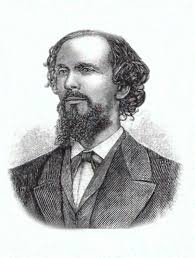
Karl Heinrich Ulrichs was the first gay man to advocate for gay rights. He did so during the mid-1800s in Germany. Ulrichs was attracted to clothing and activities traditionally deemed feminine from a young age (Karl Heinrich Ulrichs- Making Queer History, https://www.makingqueerhistory.com/articles/2018/3/13/karl-hinreich-ulrichs). In “Intro to Men’s Studies”, Christopher Kilmartin defines anti-femininity as the direct refusal to associate with tangible and intangible aspects of femininity such as clothing, emotions. The film “The Mask You Live In” suggests the idea that when men discriminate against gay people , they are in fact truly attacking women. Therefore, it can be argued, in my opinion that being an advocate for gay rights, especially when one is gay themselves, they are subverting anti-femininity. We live in a heteronormative society, meaning everyone is assumed to be straight. Therefore, the “default man” or the “traditional man” would certainly be, a straight man. In this regard, being a gay man is a subversion once again.
According to a study done by the University of Geneva, there is a positive correlation between feminine qualities in men and homophobia (The Feminization of Men Leads to an Increase in Homophobia, https://eurekalert.org/pub_releases/2019-01/udg-tfo012219.php). It is argued in this study that masculine traits were traditionally formed from being the opposites of feminine traits. Certain traits that are listed in the study as being seen as masculine are: a lack of emotional display, aggression, and homophobia. Homophobia is directly listed as a masculine trait. Professor Falomir of the University of Geneva said, “Homophobia is the alternative way of asserting [heterosexual men’s] masculinity. Thus, if, as they say, masculinity is seen as the opposite of femininity, then homosexuality, some might say the opposite of homophobia, could well be a trait considered part of femininity.